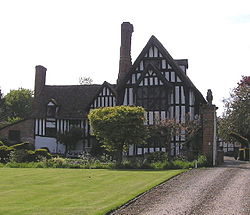| Huddington | |
|---|---|
 Huddington Court | |
Location within Worcestershire | |
| Civil parish |
|
| District | |
| Shire county | |
| Region | |
| Country | England |
| Sovereign state | United Kingdom |
| Post town | Droitwich |
| Postcode district | WR9 |
| Police | West Mercia |
| Fire | Hereford and Worcester |
| Ambulance | West Midlands |
| UK Parliament | |
Huddington is a village in Worcestershire, England.
